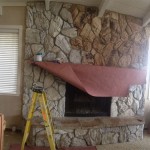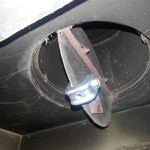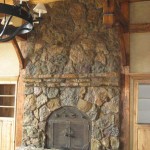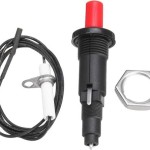Marble Tile Fireplace Surround Installation: A Comprehensive Guide
The fireplace, often a focal point of the home, exudes warmth and elegance. Enhancing this characteristic with a marble tile surround elevates its aesthetic appeal and adds a touch of sophistication. Marble, a natural stone known for its veining patterns and durability, presents a timeless option for fireplace surrounds. This article provides a detailed guide to the installation process, covering necessary preparations, installation techniques, and essential considerations for a successful outcome.
Proper installation of a marble tile fireplace surround requires meticulous planning and careful execution. Understanding the intricacies involved minimizes potential errors and ensures a professional-looking finish. Factors such as surface preparation, material selection, and adherence to safety precautions play a significant role in achieving optimal results that will increase the longevity of the surround.
Preparing for the Marble Tile Installation
Before commencing the marble tile installation, a thorough preparation stage is crucial. This stage encompasses several key steps, including assessing the existing fireplace structure, gathering necessary tools and materials, and preparing the substrate for tile adhesion. Neglecting these preliminary tasks can compromise the stability and visual appeal of the finished surround.
First, a comprehensive inspection of the existing fireplace structure is necessary. This involves checking for any structural damage, such as cracks or loose bricks, that may require repair before tiling. Any existing surround materials, such as wood or drywall, must be removed to expose the underlying substrate. This ensures a clean and stable surface for the marble tiles to adhere to.
Next, the necessary tools and materials must be gathered. Essential tools include a tile saw (wet saw preferred for marble), a notched trowel (size dictated by tile size), a rubber mallet, a level, a measuring tape, a pencil, safety glasses, work gloves, and sponges. Material requirements encompass the marble tiles themselves, thin-set mortar (specifically formulated for natural stone), grout (color-matched to the tile or desired contrast), sealant (for sealing the grout lines), and backer board (if the existing substrate is unsuitable or uneven).
The preparation of the substrate is critical for achieving a strong and lasting bond between the tiles and the fireplace structure. If the existing substrate is concrete or masonry, it must be cleaned thoroughly to remove any dirt, dust, or debris. A wire brush and a damp sponge can be used to achieve this. If the substrate is uneven or damaged, a layer of backer board should be installed to provide a smooth and stable surface. Backer board is typically secured to the fireplace structure using screws and can be cut to size using a utility knife.
Prior to actual tile installation, it is highly recommended to dry-lay the tiles. This involves arranging the tiles on the floor or a large surface in the desired pattern to visualize the final appearance and ensure proper fit. Adjustments to tile placement or cuts can be made during this stage, minimizing waste and ensuring a harmonious design. Pay close attention to grout lines and ensure they are consistent throughout the design. Number the tiles to track during the dry lay process so you know where each tile needs to be placed when the thin-set mortar is ready.
Installing the Marble Tiles
The installation of the marble tiles is a meticulous process that requires precision and attention to detail. Starting with the application of thin-set mortar, each tile must be carefully positioned and secured to the prepared substrate. Proper alignment and spacing are crucial for achieving a professional-looking finish.
Begin by mixing the thin-set mortar according to the manufacturer's instructions. Ensure the mortar is thoroughly mixed to a consistency similar to peanut butter. Apply a thin, even layer of mortar to a small section of the substrate using the flat side of the notched trowel. Then, use the notched side of the trowel to create ridges in the mortar. These ridges provide a better bond between the tile and the mortar.
Carefully position the first tile onto the mortar, pressing it firmly into place. Use a slight twisting motion to ensure good contact with the mortar. Use a level to verify that the tile is perfectly level. If necessary, gently tap the tile with a rubber mallet to adjust its position. Repeat this process for the remaining tiles, using tile spacers to maintain consistent grout lines. Ensure the tiles are aligned properly and that the grout lines are straight and uniform. Regularly check the level and alignment of the tiles as you progress.
Cutting marble tile requires a wet saw to prevent chipping and cracking. Measure the necessary cuts accurately and use the wet saw to make precise cuts. Always wear safety glasses when operating the wet saw. After cutting, smooth the edges of the tiles with a sanding block or a wet stone to remove any sharp edges.
Once all the tiles are installed, allow the thin-set mortar to cure completely according to the manufacturer's instructions. This typically takes 24-48 hours. During this time, avoid walking on or disturbing the tiles. After the mortar has cured, remove the tile spacers and prepare for grouting.
Grouting and Sealing the Marble Tile Surround
Once the mortar cures, grouting is essential for filling the spaces between the tiles, providing a finished look, and preventing water penetration. After grouting, sealing protects the marble and grout from stains and moisture damage, ensuring the longevity and beauty of the installation.
Mix the grout according to the manufacturer’s instructions. Apply the grout to the tile surface using a grout float, working it into the grout lines at a 45-degree angle. Ensure the grout lines are completely filled. Remove excess grout from the tile surface using the grout float. Allow the grout to set for the time specified by the manufacturer, usually about 15-30 minutes.
After the grout has partially set, use a damp sponge to clean the tile surface. Rinse the sponge frequently and avoid using too much water, as this can weaken the grout. Use a clean, dry cloth to buff the tile surface and remove any remaining grout haze. Allow the grout to cure completely, typically for 24-72 hours.
Once the grout is fully cured, seal the grout lines and the marble tiles with a high-quality sealant specifically designed for natural stone. Apply the sealant according to the manufacturer's instructions. This will protect the marble and grout from stains and moisture damage. Allow the sealant to dry completely before using the fireplace. Reapply the sealant periodically as needed, typically every 1-2 years, to maintain the protection.
Throughout the entire installation process, maintain a clean work environment is crucial. Regularly clean up any spills, dust, or debris to prevent accidents and ensure the quality of the finished product. Proper ventilation is also important, especially when working with thin-set mortar, grout, and sealants. By following these steps, a homeowner can achieve a beautifully installed and durable marble tile fireplace surround.
Selecting the right type of marble is also a very important piece of the puzzle. Marble is a natural stone and comes in various types, each with its unique characteristics. Some marbles are softer and more porous than others, making them more susceptible to staining and damage. Research the different types of marble and choose one that is appropriate for a fireplace surround. Consider factors such as color, veining, and durability when making your selection. It's also wise to purchase a few extra tiles to allow for cuts and mistakes and extra if you need to replace a tile in the future.
Furthermore, understanding building codes is also important to consider. Before starting the project, research and understand the local building codes and regulations related to fireplace surrounds. Some areas may have specific requirements regarding the type of materials that can be used, the distance between the fireplace opening and combustible materials, and the installation methods. Failing to comply with these codes can result in fines or the need to redo the installation.

A White Marble Tile Fireplace Update The Diy Playbook Makeover Remodel Surround

How To Install A Marble Herringbone Fireplace Surround And Hearth

How To Install A Marble Herringbone Fireplace Surround And Hearth

How To Seal Marble Shine Your Light

Our 200 Marble Fireplace Makeover Young House Love

Do It Yourself Divas Diy Marble Tile Fireplace Renovation Herringbone Pattern Tutorial

How To Add Herringbone Marble Tile A Fireplace Southern Hospitality

How To Tile Over A Marble Fireplace Surround Porch Daydreamer

How To Tile A Fireplace South Georgia Style

Do It Yourself Divas Diy Marble Tile Fireplace Renovation Herringbone Pattern Tutorial








